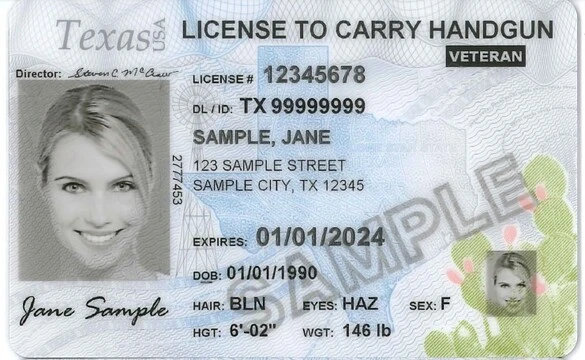For individuals in Texas concerned about personal safety, grasping the concept of the use of force continuum is vital. This model, originally designed for law enforcement, serves as a structured guide to determine the appropriate level of force in a given situation. While it is rooted in policing practices, its principles are equally relevant to civilians, especially those with a concealed carry license. By understanding this framework, you can make informed decisions in self-defense scenarios, ensuring that your response aligns with legal and ethical standards. This article explores the use of force continuum, its application in Texas, and how it relates to personal protection.
What Is the Use of Force Continuum?
The use of force continuum is a progressive scale that outlines varying levels of force, from no force at all to deadly force. Developed by the National Institute of Justice (NIJ) in 1989, this model provides a framework for assessing threats and responding proportionately. For both law enforcement and civilians, it emphasizes the importance of starting with the least aggressive means possible before escalating to more severe actions. Understanding this continuum is crucial for anyone prioritizing self-defense in Texas.
The Role of Law Enforcement in Shaping the Continuum
Law enforcement agencies across the United States, including in Texas, rely on the use of force continuum to guide officers in volatile situations. According to the Texas Commission on Law Enforcement (TCOLE), the model ensures that officers apply force only as necessary, protecting both themselves and the public. For civilians, observing how law enforcement uses this framework offers valuable lessons in restraint and proportionality when facing a threat.
Texas and the Legal Framework for Use of Force
In Texas, the use of force continuum aligns with state laws governing self-defense and the protection of others. The state recognizes the right to defend oneself against an imminent threat, but the response must be reasonable and proportional to the danger. As outlined in resources from the Texas Municipal Police Association, understanding these legal boundaries is essential, especially for those carrying a concealed firearm. Texas law emphasizes that deadly force should only be used when facing serious bodily harm or death.
Level 1: Communication as the First Line of Defense
At the base of the use of force continuum is Level 1, where no physical force is used. Here, effective communication serves as the primary tool for de-escalation. By calmly addressing a potential threat through dialogue, you may resolve a situation without any physical intervention. For civilians in Texas, mastering verbal de-escalation techniques can prevent the need to escalate to higher levels of force.
Level 2: Issuing a Verbal Warning for De-escalation
If initial communication fails, the next step is issuing a clear verbal warning. This step signals to the aggressor that further non-compliance may lead to physical action. As a self-defense strategy, a firm warning can often deter a potential attacker, reinforcing the importance of de-escalation before resorting to force. This aligns with the principles taught in Texas concealed carry training programs.
Level 3: Employing Empty-Hand Techniques
When verbal efforts are insufficient, Level 3 involves empty-hand techniques such as grabbing or restraining an individual. These methods aim to control a situation without causing significant harm. For civilians, learning basic self-defense maneuvers can be invaluable in managing a threat without escalating to weapons or more severe measures.
Level 4: Using Chemical Agents Like Pepper Spray
At Level 4, chemical agents such as pepper spray or tear gas come into play. These tools are designed to temporarily incapacitate an aggressor, providing an opportunity to escape or gain control of the situation. For those in Texas carrying concealed weapons, having pepper spray as a less-lethal option can be a critical intermediate step before considering a firearm.
Level 5: Less-Lethal Options Like Batons and Stun Guns
Level 5 introduces less-lethal force through tools like batons or stun guns. These options are intended to subdue a threat without causing fatal injury. While more commonly used by law enforcement, civilians trained in their use can employ such devices to protect themselves from serious bodily harm. Understanding the proper application of these tools is essential to avoid unnecessary escalation.
Levels 6 and 7: Firearms and the Last Resort of Deadly Force
The highest levels of the continuum, Levels 6 and 7, involve lethal and deadly force, typically through the use of a firearm. These levels are reserved for situations where there is an imminent threat of serious bodily harm or death. For concealed carry holders in Texas, the decision to use a firearm must be made with extreme caution, as it carries significant legal and moral weight. The NIJ stresses that deadly force is a last resort, only justified when all other options are exhausted or inapplicable.
Applying the Continuum to Self-Defense Scenarios
For civilians in Texas, the use of force continuum offers a practical guide for self-defense. Start with communication and de-escalation tactics to resolve conflicts peacefully. If a threat escalates, progress through the levels methodically, ensuring your response matches the danger posed. Whether you carry pepper spray, a stun gun, or a firearm, knowing when and how to act can make the difference between safety and unnecessary harm. Always prioritize avoiding an imminent threat over engaging in combat unless absolutely necessary.
Conclusion: Empowering Yourself with Knowledge
Understanding the use of force continuum equips individuals in Texas with the knowledge to navigate self-defense situations responsibly. By following this structured approach, from communication to the cautious use of deadly force, you can protect yourself and others while minimizing risk. For concealed carry license holders, this framework is especially critical, ensuring that force is applied only when justified. Stay informed, train regularly, and always aim for de-escalation to maintain safety in the face of danger.




